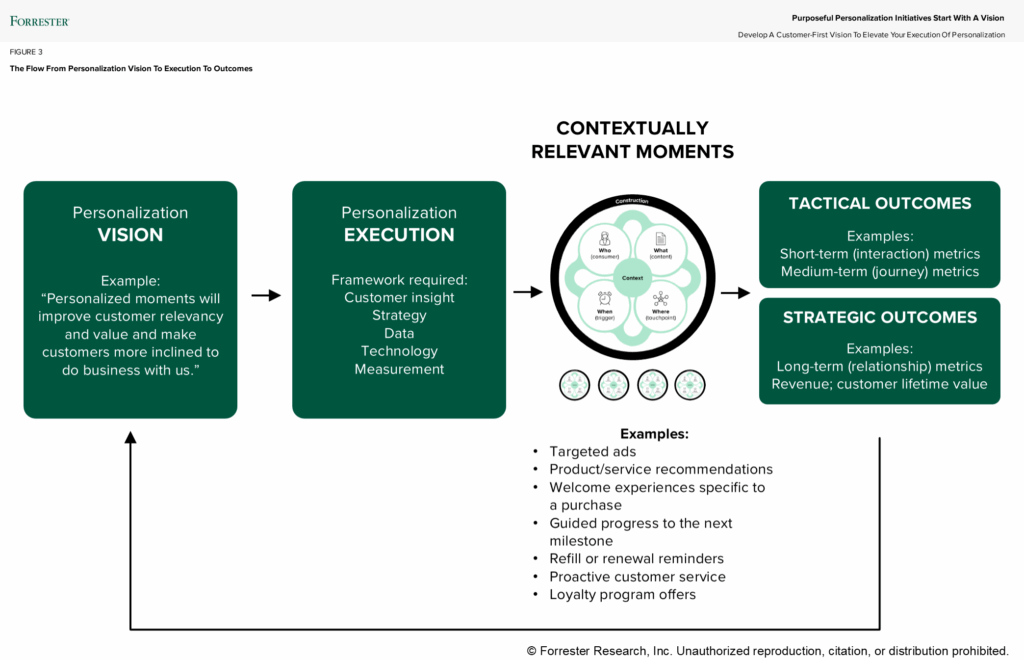Ensure That Your Consumer Personalization Vision Is 20/20
Clients often ask us, “What are personalization best practices?” But depending on the organization, the word “personalization” can mean very different things. Personalization is multifaceted and needs a qualifier such as personalization initiatives, personalization programs, personalization capabilities, personalized tactics, personalized interactions, personalized moments, consumer personalization, or business personalization. Forrester defines personalization as:
The use of a customer’s history, preferences, behaviors, intent, and context to frame, guide, enhance, and anticipate interactions for relevancy and a mutual exchange of value between the customer and organization.
Personalization success hinges on your ability to define and articulate what personalization and its derivatives mean to your customers and organization. Read our new report, Purposeful Personalization Initiatives Start With A Vision, to create a crystal clear vision and combat personalization overgeneralization. A good personalization vision contains some or all of these elements. It:
- Identifies a customer need.
- Indicates a positive outcome for the customer.
- Ties customers to organizational goals in a mutual exchange of value.
Establishing this vision reaps greater benefits for your organization, including gaining alignment and buy-in across the company, refining strategies and tactics in light of clearer objectives, conserving data collection efforts, using more purpose-driven and organized technologies, and measuring effort and outcomes more strongly.
Develop Your Organization’s Personalization Vision With Customer Needs In Mind
Before crafting your personalization vision, read our newly updated report, The State Of US Consumer Personalization, 2025, to understand the consumers’ and/or customers’ perspective. For a second year in a row, consumers report feeling “meh” about personalized interactions with companies. According to Forrester’s Media And Marketing Survey, 2025, only 53% of US online adults said they like when companies personalize interactions.
Why? Organizations prioritize personalization business goals over consumer needs, creating personalized interactions that aren’t always in the best interest of the customer. Customers just want personalized moments to be relevant and valuable. They don’t care if personalized interactions arrive to them via 1 to many, 1 to few, or 1 to 1 or if they’re “hyperpersonalized.” Customers just want the interaction to be applicable to them (relevant) and helpful to them (valuable). When it comes to personalized interactions, our research finds that consumers:
- Care most about personalized interactions related to economic value (related to money; e.g., relevant discounts and rewards, predictable pricing).
- Want personalized moments that improve functional value (related to usefulness; e.g., reliability, performance, feature fit, ease of setup and use).
- Are indifferent to experiential value in personalized tactics (related to positive interactions and sensations; e.g., design and sensory allure, courtesy, reassurance).
- Care least about personalized moments that emphasize symbolic value (related to belonging; e.g., status, social standing, community, connection).
Once your organization anchors on a strong personalization vision, only then can you launch into personalization execution, which entails zeroing in on strategy, data, technology, and measurement (see the figure below). Read Forrester’s Essential Research For Approaching Consumer Personalization to go deep on execution, and schedule a guidance session or inquiry with us to chat live.

